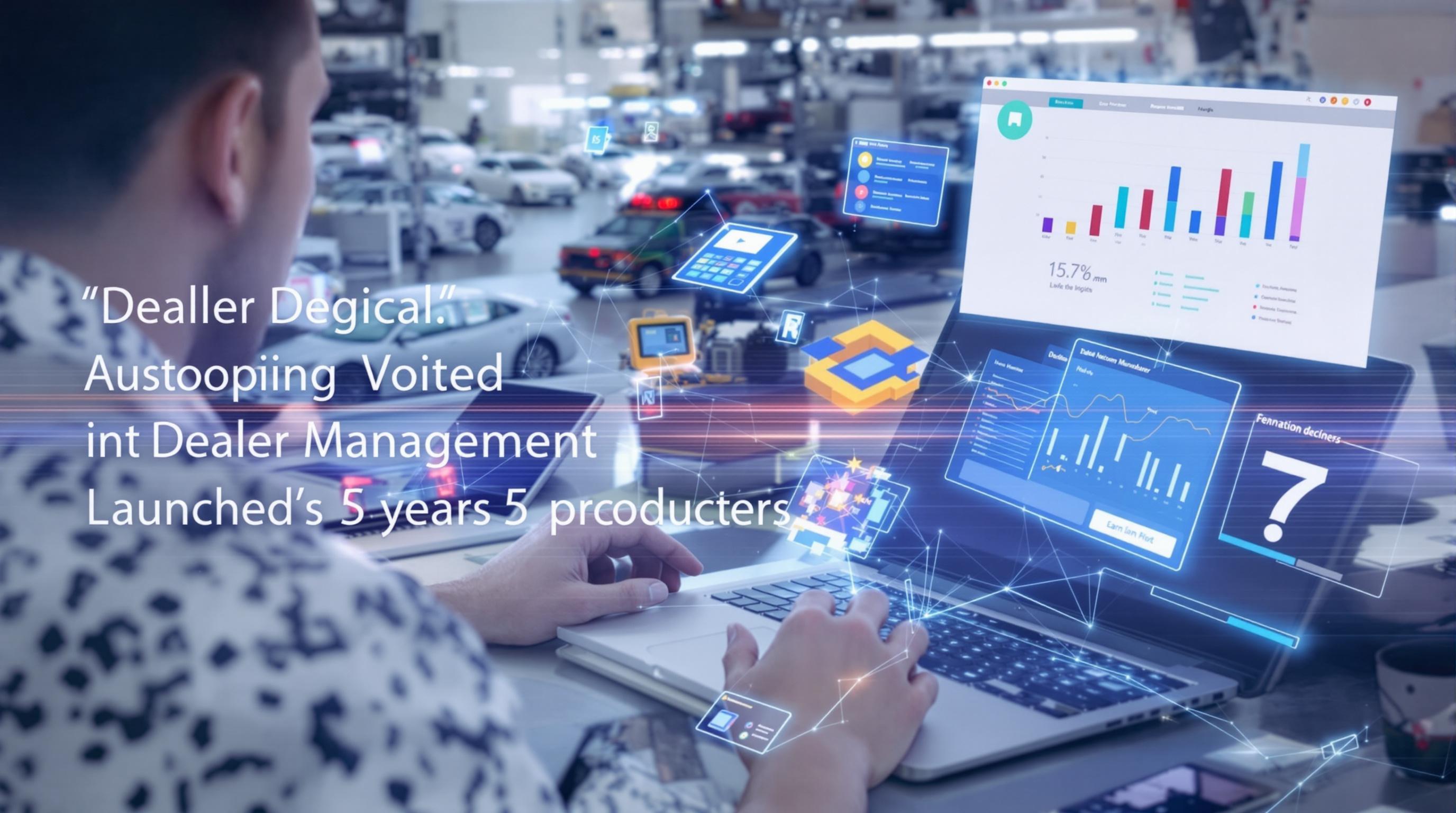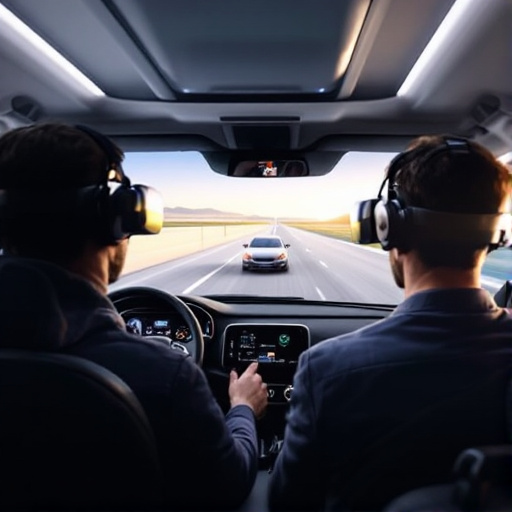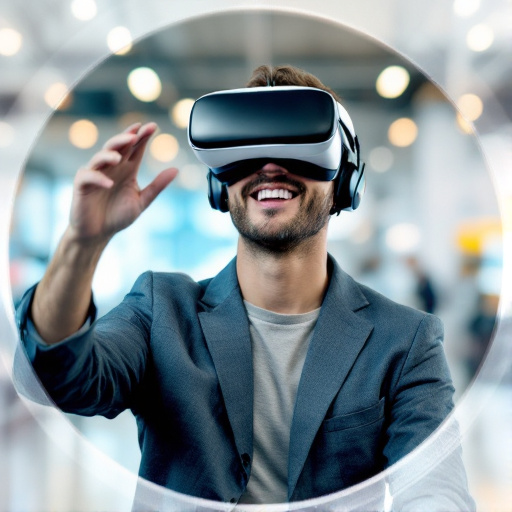Related Articles
- Unveiling the Unthinkable: How Your Social Media Posts Could Impact Your Car Insurance Premiums
- "From Showroom to Social Media: How Dealerships are Becoming Digital Storytellers in 2023"
- "From Showroom to Stream: The Rise of Virtual Reality Test Drives at Dealerships"
- Revving Up Sales: How Virtual Reality is Transforming the Dealership Experience for Shoppers and Sellers Alike
- Selling Experiences: How Dealerships Can Transform into Immersive Automotive Entertainment Hubs
- The Surprising Impact of Your Credit Card Habits on Car Financing: What You Didn't Know!
Selling Experiences: How Dealerships Can Transform into Immersive Automotive Entertainment Hubs
Selling Experiences: How Dealerships Can Transform into Immersive Automotive Entertainment Hubs
As consumer preferences evolve, automotive dealerships must shift from traditional sales tactics to creating immersive experiences that engage, entertain, and inspire. This article explores innovative strategies for transforming dealerships into automotive entertainment hubs, illustrating how experiential selling can enhance customer loyalty and drive sales.
The Changing Landscape of Automotive Retail
The traditional car dealership experience often involves a sterile environment, a bland waiting area, and a relentless salesman. However, statistics reveal a stark contrast in consumer expectations. According to the 2019 Car Dealer Consumer Experience Report by Statista, 72% of customers expressed a desire for a more engaging and personalized shopping experience. Thus, the opportunity for dealerships lies in tapping into this wave of change.
Understanding the Customer Journey
Every car buying experience begins with a journey—an exploration of options, ideas, and preferences. Imagine entering a dealership that feels less like a showroom and more like an art gallery or a high-tech theater. By understanding the emotional triggers in the customer journey, dealerships can design spaces that appeal to all senses, providing an exhilarating automotive adventure. This approach aligns with a study by Automotive.com, which found that experiential marketing can boost brand loyalty by up to 70%.
The Power of Experience
Consider Tesla, a brand that has successfully built its identity around customer experiences rather than just selling cars. Tesla's showrooms allow customers to interact with vehicles in a relaxed atmosphere, where test drives are only a part of the experience. By making the shopping experience more about lifestyle and less about transactions, Tesla has reshaped consumer perceptions in the automotive industry.
Designing an Immersive Environment
The first step in transforming a dealership into an entertainment hub is reimagining its physical space. Here’s where creativity meets functionality. A casual lounge area with interactive exhibits showcasing cutting-edge automotive technology can do wonders in attracting customers. Incorporating VR stations allows potential buyers to immerse themselves in driving experiences without ever stepping outside. According to the Journal of Business Research, 83% of customers who participated in virtual experiences stated they felt more connected to the brand.
Building Community Through Events
Following optimal design, dealerships can create a community hub through hosting events. Think car rallies, tech symposiums, or family fun days where locals can interact with the dealership while enjoying food, music, and the thrill of automotive culture. According to a 2020 study by Deloitte, dealerships that host customer-centric events report a 40% increase in foot traffic and higher sales conversion rates.
The Art of Storytelling
One unique way to engage customers is through storytelling. Every car has a history, a personality, and potential stories waiting to unfold. Dealerships can create cinematic experiences that pitch their vehicles alongside engaging narratives—perhaps through short films or animated features that can be viewed in a showroom theater. As the old saying goes, "People don’t just buy products—they buy stories." This method can resonate particularly well with younger consumers, especially Generation Z, which favors brands that prioritize authenticity.
Leveraging Technology for Engagement
Today's consumers are tech-savvy, and dealerships must keep pace. By utilizing AR and mobile apps, dealerships can further enrich the shopping experience. For example, imagine a mobile app that allows customers to visualize a vehicle in their driveway or customize its features in real-time. A study by McKinsey & Company indicates that 61% of car buyers appreciate the personalized experience that technology offers in the selection process.
The Role of Customer Feedback
Feedback is essential for growth. Dealers should actively solicit and analyze customer feedback to refine their experiences continually. Utilizing surveys, social media, and direct communication after events can provide valuable insights. According to Forrester Research, companies that excel at customer experience outperform their competitors by nearly 80%, highlighting the importance of listening to one’s audience.
Cultivating Employee Engagement
It's no secret that engaged employees contribute to better customer experiences. The key is to train staff to function as experience ambassadors, not just salespeople. Empowering employees with product knowledge, storytelling techniques, and customer service skills is paramount. A 2018 study conducted by the Gallup Organization showed that businesses with high employee engagement are 21% more profitable than their less engaged counterparts.
Case Study: A New Wave of Dealerships
Consider the case of “Auto-Alive,” a dealership that successfully pivoted to an experiential model. After revamping its showroom with virtual reality experiences and hosting monthly community events, Auto-Alive reported a staggering 50% increase in traditional car sales within six months. Customers not only bought cars; they became avid participants in the dealership's community, which fostered loyalty and a sense of belonging.
Creating an Omnichannel Experience
In the age of technology, dealerships must ensure a seamless omnichannel experience. Customers should feel valued regardless of whether they are in the showroom or browsing online. By aligning their online platforms with in-store experiences, dealerships can create a cohesive journey that enhances customer satisfaction and retention. As pointed out by the Harvard Business Review, customers who engage with a brand across multiple channels have a 30% higher lifetime value than single-channel customers.
Using Innovation to Drive Sales
Innovation is key to staying relevant in the automotive space. For example, a collaborative approach with local tech firms can position a dealership at the forefront of automotive technology trends. Offering customers trade-in bonuses or loyalty programs for participating in new technology demonstrations can turn reluctant buyers into enthusiastic champions for the brand. A report from Gartner highlights that 78% of consumers expressed greater interest in brands that demonstrate a commitment to innovation.
The Future of the Automotive Experience
As the automotive industry continues to evolve, dealerships must embrace the experiential selling phenomenon. By recognizing the changing landscape of consumer preferences, utilizing technology creatively, and engaging the community, dealerships can transform from mere car sellers into vibrant automotive entertainment hubs. The key is to unlock potential through immersion and connection, leading to unforgettable experiences that will keep customers coming back for more.
Conclusion: A Shift Towards Experience
In conclusion, the road ahead for automotive dealerships is clear: they must embrace a shift toward experience-based selling. By cultivating immersive environments, leveraging technology, and focusing on storytelling and community building, dealerships not only stand to improve their customer engagement but also increase sales and loyalty.
Consider this a friendly nudge—adapt and thrive, or remain a relic of the past. The choice is yours!




